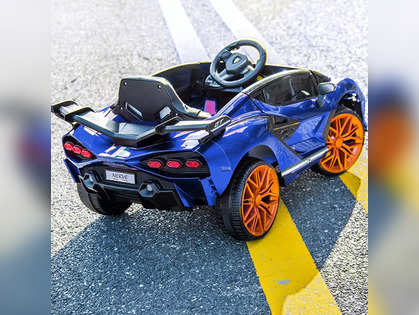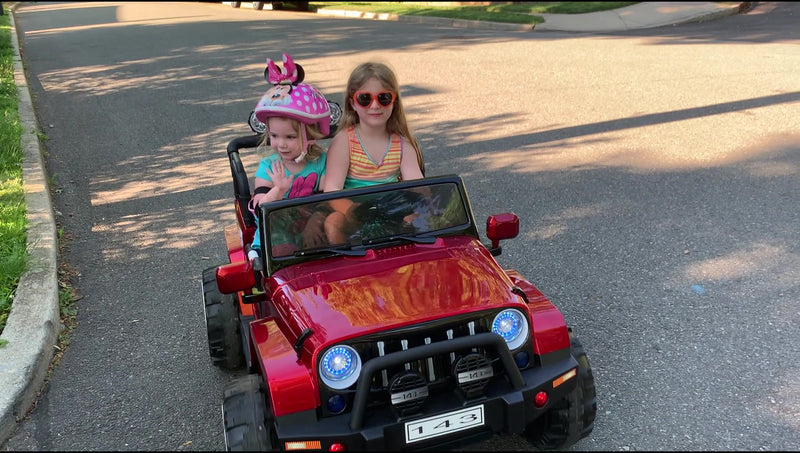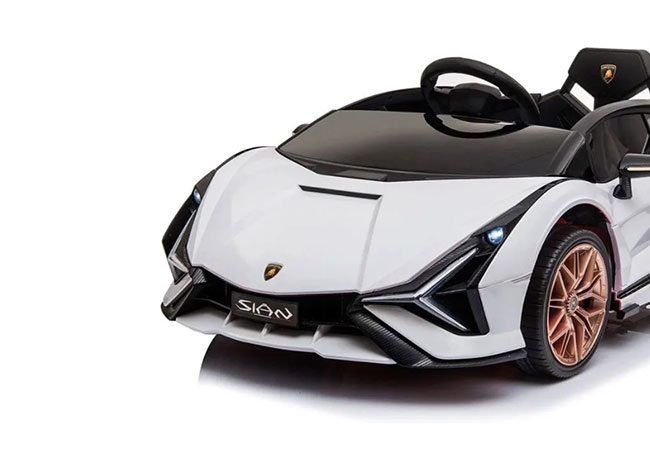Great Advice To Selecting Remote Control Childrens Cars
Wiki Article
What Are The Most Important Safety Features I Must Consider When Purchasing A Ride On Car? The Pros And The Cons
To ensure your child's safety take into consideration the following options. Seat Belts are one of the most essential safety features that you should take into consideration.
Seat belts can help protect your child and lower the possibility that they may fall from the vehicle or be removed from the vehicle. They also provide extra protection especially during sudden stops or turns.
Pros - Some cars on wheels do not include seat belts. This is especially true for those that are made for toddlers. Children may also feel uncomfortable with seat belts or restrictive, leading to resistance or refusing to use them.
Sturdy Construction
Pros: A ride-on car made of sturdy and durable materials is more robust and resistant to damage that ensures long-term safety and dependability. It's made to be strong enough to stand up to the demands of the game while ensuring stability.
Cons - Sturdy design usually is priced higher at the that makes it more expensive for certain families. Additionally, the weight of the materials can affect the mobility and maneuverability.
Low Center of Gravity
Pros: Cars with lower centers of gravity are less likely to tip over and reduces the chance of injuries or accidents. They are also more steady and stable, particularly when performing turns or other moves.
Cons - Ride-on cars that have a low centre of gravity can sacrifice the ability to drive off-road or have a higher the clearance of their ground, which limits their range of use.
Parents' remote control -
Pros: Remote-controlled cars allow parents to supervise and monitor their child's playing, adding an extra layer of supervision and security. Parents can intervene in emergencies and navigate treacherous terrains or avoid collisions.
Cons - Remote control by parents could hinder the autonomy and independence of children since they depend on parental support and supervision in play. In addition, models that can be operated remotely could cost more than models with manual controls.
Speed Limiters
Pros-Ride-ons that come with speed limiters as well as variable speed settings enable parents to determine the maximum speed for their car. This reduces the possibility of a crash or collision. The parents can raise the speed of the ride-on car when their child grows more proficient and confident.
Cons – Some children will surpass lower speeds that can result in disappointment and frustration. Additionally, certain models might not come with speed limiters or require additional features or accessories.
Safe Start Technology -
Safe start technology decreases the possibility of lurches or sudden jerks which could startle or cause a child to fall. This ensures a safer and more enjoyable ride.
Cons - Some rides with safe-start technology can be more costly than cars that do not. Children may prefer the gradual acceleration deceleration less exciting as immediate stops and begins.
Visibility Enhancements
Pros - Ride-on cars fitted with visible enhancements such working headlights, reflective materials or taillights improve the visibility of the vehicle. This is especially the case in dimly lit environments or under certain conditions. They improve safety by enhancing the visibility of cars to pedestrians as well as other vehicles.
Cons – The addition of visible features can make it more difficult for battery to drain or in the ride-on vehicle's design. These factors can cause problems or problems with maintenance.
If you consider the pros and con of each safety feature, you can select an ride-on car which is secure and gives a fantastic play experience for your child. Take a look at the most popular electric kids cars for site examples including electric ride along car, remote control childrens car, kiddies cars, ride on toy, car toy car toy, ride on car, toy cars toy car, digger ride, race car toy, 2 seater electric cars and more. .

What Type Of Specifications For Assembly And Maintenance Are There For Children's Ride On Vehicles?
Kid's ride-on cars typically require some assembly and regular maintenance to ensure optimal performance security, longevity, and safety. These are some of the most commonly used assembly and care requirements for children's rides-on vehicles.
Most ride on cars are not fully assembled at the time of arrival and require some sort of assembly. Connecting steering wheels, wheels seats, and accessories as per the instructions given by the manufacturer is usually required.
Follow the assembly instructions closely to ensure all components are correctly aligned and securely secured. To complete the assembly, you will need the tools and equipment supplied.
Cleaning –
Regular cleaning is necessary to keep the ride-on car looking its best and functioning effectively. Use an incredibly soft and dampened sponge or cloth with mild soap and warm water to wash exterior surfaces.
Pay particular attention to areas that are susceptible to buildup including the wheels, tires and undercarriage. Utilize a toothbrush and brush to clean those difficult-to-access areas.
Beware of harsh chemicals and aggressive detergents. They can damage electronic parts or the paint of your ride-on vehicle.
Battery Care -
If the ride-on vehicle is powered with a rechargeable battery the proper care of batteries is vital to maintain performance and prolong the life of the battery. Battery care is easy when you follow these tips.
It is essential to charge your battery fully prior to and after every usage to ensure you get the best from it.
Overcharging the battery or keeping it in charge for prolonged periods of time can damage the battery and shorten its life.
When not in operation, keep the car's battery and ride-on vehicles in an area that is cool, dry and far from intense temperatures and direct sunlight.
Check the battery terminals regularly to check for any damage or corrosion and clean them using a wire brush or terminal cleaner If necessary.
Replace the battery if it does not hold any charge or displays indications that it is damaged or damaged.
Tire Maintenance -
Examine the tires frequently for indications of damage, wear or loss of air pressure. If needed, inflate the tire to the recommended pressure with a bike compressor or pump.
Check the tread pattern of your tires for obstructions and foreign matter that can cause punctures or flats. Take out any obstructions, and repair or replace damaged tires as needed.
Lubricate the wheel bearings as well as axles on a regular basis to reduce friction.
Repair or replace components as needed -
Ride-on vehicles may require repair or replacement of parts due wear or damage.
Check for indicators of malfunction, such as unusual noises, a decrease in the power supply or erratic behavior. Consult the manufacturer’s instructions or contact Customer Support for help troubleshooting.
Replace worn out or damaged components promptly to avoid further damage and ensure security and functionality of the ride-on vehicle.
Follow these assembly guidelines and maintenance tips will make sure your child is entertained for hours, safe playtime. Follow the most popular read this for kids cars for website info including toy a car, electric ride along car, toy car for car, childrens electric cars, two seater electric cars, car on ride, electric two seater cars, electric ride along car, electric car ride, childs ride on car and more. .

How Do You Establish An Amount To Spend On A Ride-On Car For Your Child?
When deciding on your budget, it is important to take into consideration features, durability, as well as your financial situation. Here's how to establish a budget and discover the most value for your money. Study Average Prices -
Learn about the price average for the kid's ride-on car that you would like to purchase. Pricing information can be found on different models by visiting online retailers, toy stores and manufacturers' websites.
Choose the most important features to have to
Choose the features that are crucial for your child's enjoyment and safety. Price may be affected by features, such as an active headlight, real sound, parental remote control and seat belts.
Prioritize your features based on your child's preferences and financial budget.
Consider Durability and Length of Life
Choose ride-on vehicles built of sturdy materials such as premium plastics or metals. These can withstand frequent use and weather conditions.
Check out reviews and ask for suggestions from other parents to evaluate the durability and longevity of the various models. A higher upfront investment in a well-built ride-on car can result in savings for the long run by avoiding frequent repairs or replacements.
Compare prices from different stores
Comparing prices with other retailers can enable you to find the most affordable bargains. Find promotions and sales at local department stores, toy stores, and online retailers.
Keep an eye out for sales, discounts, or clearance offers that can help you save money on your purchase without compromising on quality.
Add Costs to Additional Costs
Incorporate any other expenses you may incur when purchasing the ride-on car for your child. This includes shipping fees tax, and other accessories (e.g. batteries for extra batteries, safety gear).
Plan your costs for total ownership, including maintenance and accessories to ensure you can afford them.
Make a budget that is realistic -
Make a budget that is realistic in accordance with your budget and research needs. This will align your priorities with your goals. Calculate the maximum you're prepared to shell out for your child's ride-on while taking into consideration characteristics and durability or the longevity.
Don't overspend on features that don't make a huge difference to your child.
Consider the value over time Consider the long-term value
The child's ride-on vehicle should be evaluated in terms durability, versatility and its ability to grow with the child. It could be worthwhile investing into a larger model that has more features in the long run.
You can find the most affordable deal on a ride-on car for your child by establishing the budget and making comparisons of features, durability and long-term durability, and then establishing a budget. Prioritize features that are important to your child’s safety and satisfaction while making sure you are mindful of your budget. Follow the top remote control childrens cars kidscars.co.uk tips for blog info including childrens electric ride on, kids electric cars, ride of car, car electric ride on, toy a car, lambo toy car, childs car toy, toy car, two seater childrens electric cars, car for toy and more. .
